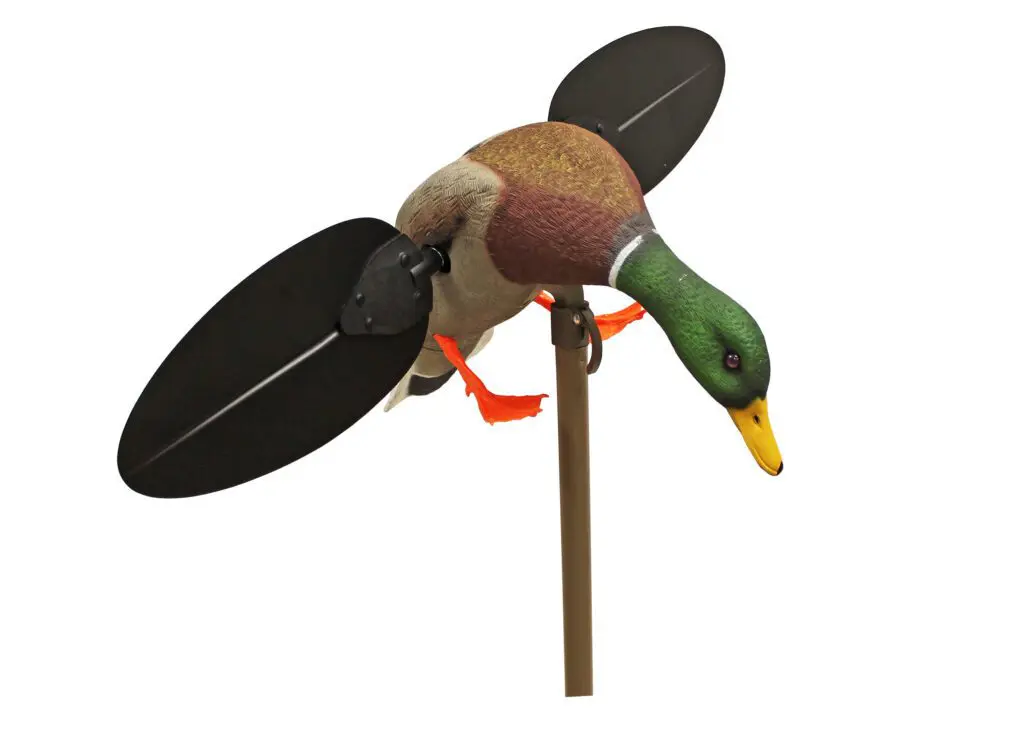Spinning-wing decoy has upgraded motor, wings and lithium battery
By Alan Clemons, For Lone Star Outdoor News
The morning was slow for our crew, with ducks flying high and ignoring the decoys in front of our four-man blind. A single would come in here and there, and a few decided to take a headfirst swim, but things were slow. We could see ducks, though, which made things frustrating.

Finally, the landowner and host said it was time to give his spinning-wing decoy a try. Along with a few chuckles and shrugs was a sense of “can’t hurt anything.” He waded through the shallow flooded paddy to about 20 yards in front of our blind, set up the pole and put the decoy on it. When he flipped the switch, the wings began spinning. I’d never seen one before, having grown up with old paper or Styrofoam-style decoys and a pull string on one for movement.
Moments later someone said, “there’s a single,” and we strained our eyes to see the duck cruising the property line easily more than 100 yards away. Our host blared a lung-busting hail call, then a second one. The duck turned like it had hit a wall and came to the decoy on a rope. Then, others did similar things.
That’s what a lot of duck hunters remember about the first Mojo Mallard. They were dynamite for several years, then hunters began decrying their effectiveness. Various brands had their own versions. Hunters learned that the spinning wings weren’t magic. Sometimes they worked well, other times not so much. Two decades later, they’re still an option many use from coast to coast.
Mojo is returning to those early years with its original Mojo Mallard but with a slew of upgrades. Notable is the revamped high-torque motor and new lithium battery with single male/female plug-in connector. The motor, battery and other internal gear is reinforced by the support pole, instead of the decoy’s body to add more longevity to the decoy while helping maintain smoother aluminum spinning wings with new magnetic connections. The mounting peg is molded separately and connected from the outside through the body. A second emergency wire allows you to connect the motor directly to the battery if the electric components have any issues. The battery runs 10 hours per charge and is rated for 1,500 charges.
The body is more realistic, too, with definition and realistic colors. Mojo commissioned its carver to create an anatomically correct “steering” land- ing position for even more realism. The wings are white on one side and black on the other. They have no feathers or other definition, thus providing a better flash to attract ducks.
During a few days of hunting in Arkansas in December 2022, our hosts pulled out their trusty spinning-wing decoys each day. As usual, they worked and didn’t work. Ducks are fickle. But that’s part of the fun, and Mojo’s new, updated decoy will continue to add to that enjoyment in the coming seasons.


